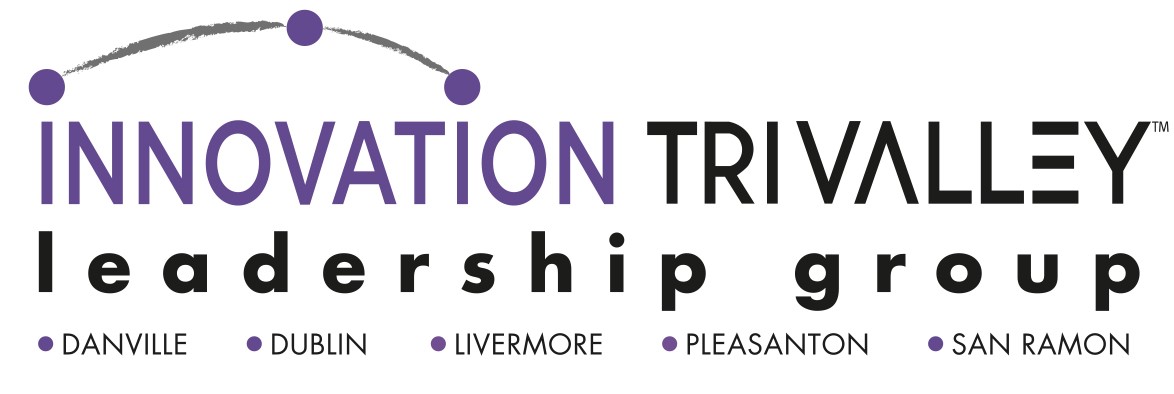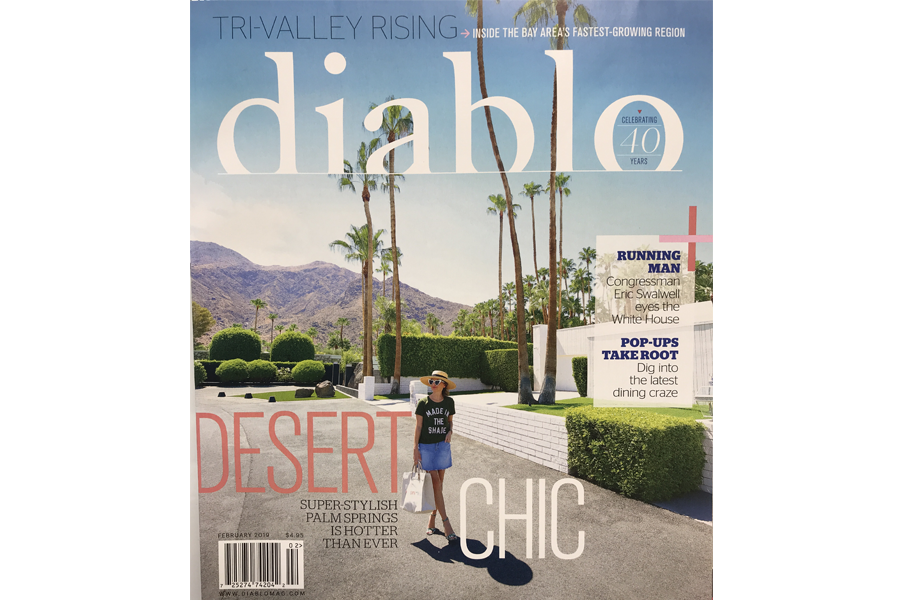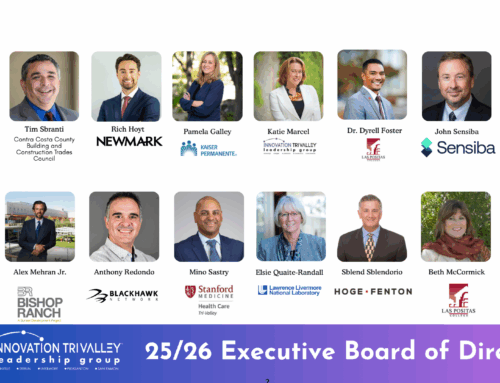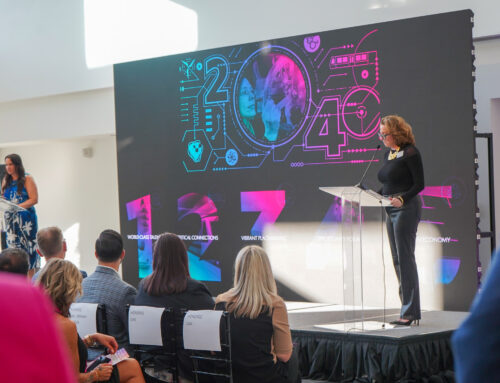There’s a span of southbound I-680 in San Ramon that stretches stick-straight, just north of the Crow Canyon Road overpass. Chris Schlies has a vivid memory of seeing it from his car while driving home one afternoon.
“I looked in my rearview mirror after I picked my sister up, and there were no cars. There were absolutely no cars,” Schlies recalls.
It was around 1971.
“You could go at 4 in the morning and not find that now,” says Schlies, an attorney who still drives that stretch often while commuting between his home in Alamo and his law office in Pleasanton.
In the decades since, Schlies has witnessed the Tri-Valley—which encompasses Pleasanton, Livermore, Dublin, San Ramon, and Danville—transform from a cluster of quiet bedroom communities for San Jose and San Francisco into the fastest-growing pocket of the Bay Area and an emerging innovation hub in its own right.
More than 450 technology companies now have locations in the Tri-Valley, which has caused employment to surge 35 percent from 2006 to 2016—outpacing both San Francisco and Silicon Valley, according to a 2018 report titled Tri-Valley Rising, published by the Bay Area Council Economic Institute and the Innovation Tri-Valley Leadership Group, a cadre of business and community leaders that aims to support and promote the region’s tech economy. The tremendous job growth helped the Tri-Valley’s population swell by almost a third since 2005—it’s now up to 361,000 and counting—and contributed to a regional output of $42 billion in 2016.
“A lot of big thinking is going on in the Tri-Valley that maybe the rest of the Bay Area could learn from,” says Jeff Bellisario, vice president of the Bay Area Council Economic Institute and one of the report’s authors. “There’s more regional collaboration [here] than in other parts of the Bay.”
Smack in the geographical center of the Bay Area, the Tri-Valley’s five suburbs blossomed along the crossroads of interstates 580 and 680, two vital East Bay arteries for commuters to the region’s urban centers.
Generations of developers have eyed the flat, open lands on the outskirts of the Tri-Valley’s quaint city centers and quiet neighborhoods. And generations of residents have fought to preserve their communities, voting down development proposals and adopting a legal force field called an urban growth boundary to limit sprawl by drawing a perimeter for construction in certain areas.
Schlies spent years in the ranks of the slow-growth movement as both a concerned local and a member of the Tri-Valley Conservancy, campaigning for like-minded city government candidates and working with his cohorts to successfully curb several proposed projects. But preventing construction has not stopped people and businesses from flocking to the Tri-Valley, and Schlies—anticipating no sign of a slowdown—knows he may never again see the highway the way it looks in his memory.
“I think that growth arguments over the next 20 years are going to be different than they were over the last 35 years that I’ve led this [slow-growth campaign],” he says.
Many of the assets that made slow-growthers want to protect the Tri-Valley from the impacts of development—its location, open land, safe suburban neighborhoods, relatively affordable home prices, good schools, and transit options—are exactly the reasons for the region’s explosion. With nowhere to go but forward, community leaders and residents are navigating a new normal in the East Bay’s latest hot spot.
Growth Fueled Growth
When Tim Sbranti graduated from Dublin High with the class of 1993, the school had approximately 800 students and just one advanced-placement (AP) class. Now, not only has Dublin High’s enrollment ballooned to more than 3,000 students, but a hotly debated second high school is in the pipeline for a projected fall 2022 opening.
As the area’s population rose, “growth fueled growth,” says Sbranti, now the high school’s athletic director and formerly a Dublin mayor and the director of strategic initiatives for Innovation Tri-Valley. Rising enrollment allowed Dublin High to add more AP classes (it now offers more than 20) and career-oriented academic options such as the biotechnology, engineering design, and culinary arts pathway programs.
“The student outcomes that we see now are just off the charts,” Sbranti says. “I think the region has benefited from that, and then large employers are attracted to that because they see that talent pool of an educated workforce here locally.”
But pinpointing whether to credit the enrollment boost for improving schools or the schools for attracting growth is like asking whether the chicken or the egg came first.
Even before the tech companies began cropping up here, the region boasted top-tier schools. Now, there are sky-high graduation rates of 97 percent and support from a community that allocated millions of dollars to updating school facilities and technology.
In nearby Livermore, Sandia National Laboratories and Lawrence Livermore National Laboratory collectively employ about 8,000 locals, drawing a large population of highly educated people and their children to the area. The labs also funnel their research and expertise to the marketplace through the collaborative Livermore Valley Open Campus innovation hub.
“The talent and the level of education and the great schools here fuel this innovative ecosystem,” says Lynn Naylor, CEO of Innovation Tri-Valley. “One of the things that’s most attractive to businesses looking at the region is that culture of innovation.”
An Economic Juggernaut
As Silicon Valley boomed, so did the competition for office space, workers, and other resources for start-ups and corporations alike.
Companies started catching wind of a suburban community tucked in the hills between San Jose and San Francisco, with an attractive talent pool, more affordable commercial rents, and enough space to promise shorter commutes and a higher quality of life than in the increasingly crowded urban centers. So they set up shop in the Tri-Valley, clustering in Pleasanton’s Hacienda Business Park and San Ramon’s Bishop Ranch, where business, retail, and residential units are contained neatly in the several-hundred-acre campuses. And development continues apace: With the recent opening of the much-anticipated City Center Bishop Ranch, designed by renowned Italian architect Renzo Piano, San Ramon boasts a new downtown that serves the growing business community at Bishop Ranch as well as the greater region.
Industry heavyweights such as Verizon, IBM, Chevron, Boeing, Morgan Stanley, and Walmart now have major offices in Hacienda and Bishop Ranch. Start-ups have also flourished amid Tri-Valley incubators, accelerators, and billions of dollars in venture capital and private equity investments.
“We’ve been called out as an economic juggernaut,” Naylor says, with three business sectors rising to the top: advanced manufacturing, cloud enterprise software, and life sciences.
“In the long term,” she adds, “we are branding ourselves as the heart of California innovation here.”
Transforming Transit
The business parks were built to cut commute times by bringing the jobs to the people, and in many respects, it worked: Half of Tri-Valley residents with jobs outside their homes commute 30 minutes or less, and nearly a quarter spend less than 15 minutes getting to work.
But that’s not to say the roads have cleared up: Thousands of Tri-Valley residents who still make daily commutes to San Francisco and Silicon Valley are sitting in denser traffic—alongside the growing thousands coming from other parts of the East Bay and the San Joaquin Valley—with longer delays than merely six years ago.
Added express lanes on the 580 and 680 corridors shaved drive times for some commuters, but that alone is not enough to keep pace with the swell of jobs and people in the region.
“We have this really strong economy, and if we want to serve it now and for the future—and if we toss in climate change, this subject gets big fast—we have to be willing to talk about transformative levels of investment,” says Randy Rentschler, the director of legislation and public affairs for the Metropolitan Transportation Commission, the Bay Area’s regional transportation agency.
That includes beefing up the Tri-Valley’s public transit options, which are experiencing increasing ridership even as more services are added and freeway traffic continues to bloat.
Nearly $2 billion (and high hopes) are being invested in a rail project called Valley Link that will connect the northern San Joaquin Valley and the Tri-Valley. If everything goes according to plan, the rail line is expected to be up and running by 2024 and is projected to carry 25,000 riders a day by 2040, according to Michael Tree, executive director of the Tri-Valley San Joaquin Valley Regional Rail Authority, the agency behind the project.
On local roads, the Livermore Amador Valley Transit Authority (LAVTA) increased bus services to run more frequently and feed right into the BART stations, business parks, and local schools—places where congestion tends to spike at certain times of day. But LAVTA is betting big on shared autonomous vehicles, or driverless shuttles (which are currently being tested), to be able to take passengers from their homes to business parks and other transit services within a decade’s time.
“Autonomous vehicles are going to be game changers in transportation,” says Tree, who also serves as LAVTA’s executive director.
Transportation planning will be crucial in determining how the Tri-Valley weathers its continuing growth. But Rentschler points out that addressing a problem is not the same as solving it.
“We almost have to wean people away from this notion that what we ought to do is spend billions of dollars and [say], ‘Where’s my BART service? Where’s my new highway lane?’ ” Rentschler explains, “as opposed to saying, ‘Look, the way to solve this problem is not to have these disparities between where people live and where the jobs are.’ ”
Lopsided Development
The Tri-Valley is still a bedroom community, according to David Stark, public affairs director for the Bay East Association of Realtors—not just for Silicon Valley, but with the region’s own economic expansion, “it’s a bedroom for itself as well,” Stark says.
For home buyers whose price gauges are calibrated to Bay Area levels, the Tri-Valley real estate market is fairly affordable: Median home values remain below $1 million, while Silicon Valley and San Francisco average $1.1 million and $1.2 million, respectively.
Still, as unrelenting demand in the region—not to mention a statewide housing crisis—squeezes the limited housing stock, Stark says prices are reaching unprecedented heights. And buyers have to move fast: A typical Tri-Valley home is on the market no more than 30 days, he explains.
Lopsided development has created this pressure throughout the Bay Area, where roughly six times as many jobs as housing units were created between 2010 and 2015. Some development is in the pipeline, and a bill recently signed into law empowers BART to create thousands of housing units on its properties. But critics have concerns, as BART doesn’t need public approval to build. Even if BART does provide new housing, Stark says, “it would be a drop in the bucket” for the East Bay’s suburban real estate markets.
One way or another, the answer seems to be: Build more homes. But it’s not that simple. The urban growth boundaries that encircle parts of the Tri-Valley draw a hard line that developers can’t cross. And many locals are resistant to high-density housing for fear it will jeopardize the area’s small-town feel.
Best Days Ahead
Kelly Cousins has lived in Pleasanton for nearly 30 years. She loves knowing her neighbors, meeting friends downtown, and going to local events such as concerts in the park—things that make her feel connected to the community.
“People have that here, and when there’s a lot of new growth, you don’t have that same sense of identity,” says Cousins, president of the grassroots organization Pleasanton Voters. “You’re just one of the many people that live in the community.”
Sbranti sees things a little differently as he looks around Dublin. He points out the new aquatic center, recently opened sports park, enhanced library, updated community center, and added shopping. Sbranti sees others who, like himself, grew up in Dublin and either stayed or came back. “When you look around and see that the people living here are people who grew up here, that’s the sign of a healthy community,” he says. “People have had the opportunity to stay here due to available housing. That’s what I love about what’s happened here.”
If the Tri-Valley is going to stay that way, it will need to make sure that the attractive features that spurred the area’s growth don’t disappear as a result of it. Not only could home prices and commute times keep climbing, but if they do, the region risks losing its pull on businesses.
If, however, community leaders and residents get it right, the possibilities are endless.
“Our best days are ahead of us, not behind us,” Sbranti says.
Tri-Valley by the Numbers
People
27% of residents are under the age of 20.
361,000 people live in the Tri-Valley—about 5 percent of the Bay Area’s total population.
50% of residents with jobs outside the home commute 30 minutes or less.
Education and Jobs
19% of jobs are in high-tech sectors.
60% of Tri-Valley residents have a bachelor’s degree or higher. That’s more than 10 percent higher than in the rest of the Bay Area.
2% of students drop out of high school.
Money
26% increase in cost of living since 2007.
$42 billion the Tri-Valley’s gross domestic product, making its economy larger than that of Wyoming and Vermont.
25% increase in average wages since 2007.
Fastest-Growing Cities in the East Bay
Here are the cities that saw the biggest population jump in just one year, between July 2016 and July 2017.
3.5% Newark
2.9% Brentwood
2.4% Oakley
2.1% Dublin
1.9% Albany
BY ANDREA VASQUEZ NELSON
ILLUSTRATION BY MAX-O-MATIC
http://www.diablomag.com/February-2019/Tri-Valley-Boomtowns/







